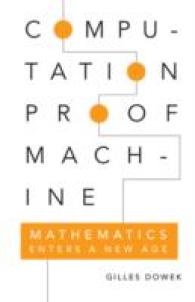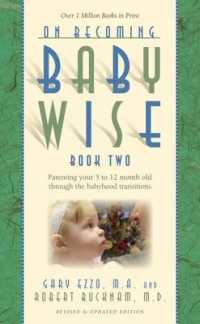- ホーム
- > 洋書
- > 英文書
- > History / World
Full Description
Quantitative Methods in Archaeology Using R is the first hands-on guide to using the R statistical computing system written specifically for archaeologists. It shows how to use the system to analyze many types of archaeological data. Part I includes tutorials on R, with applications to real archaeological data showing how to compute descriptive statistics, create tables, and produce a wide variety of charts and graphs. Part II addresses the major multivariate approaches used by archaeologists, including multiple regression (and the generalized linear model); multiple analysis of variance and discriminant analysis; principal components analysis; correspondence analysis; distances and scaling; and cluster analysis. Part III covers specialized topics in archaeology, including intra-site spatial analysis, seriation, and assemblage diversity.
Contents
Introduction; 1. Organization of the book; Part I. R and Basic Statistics: 2. Introduction to R; 3. Looking at data - numerical summaries; 4. Looking at data - tables; 5. Looking at data - graphs; 6. Transformations; 7. Missing values; 8. Confidence intervals and hypothesis testing; 9. Relating variables; Part II. Multivariate Methods: 10. Multiple regression and generalized linear models; 11. MANOVA and canonical and predictive discriminant analysis; 12. Principal components analysis; 13. Correspondence analysis; 14. Distances and scaling; 15. Cluster analysis; Part III. Archaeological Approaches to Data: 16. Spatial analysis; 17. Seriation; 18. Assemblage diversity; 19. Conclusions; 20. References.








